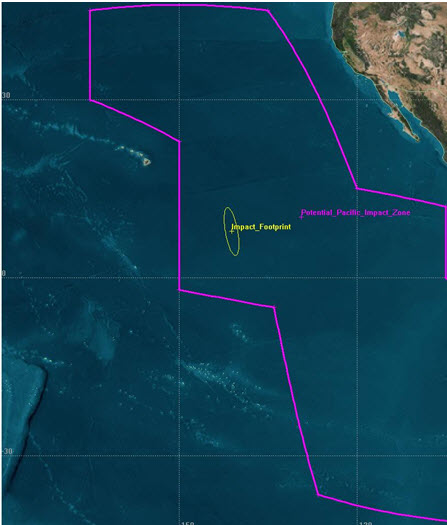by Astrogator Mike | Sep 30, 2011 | General Comments
The recent uncontrolled reentry of the UARS spacecraft got a lot of attention last week as NASA and the JSpOC tried to track the vehicle as it reentered.
It doesn’t have to be done this way, however. On March 13, 2011, a commercial spacecraft was purposefully reentered into the Pacific ocean 3000 miles southeast of Hawaii. Top-notch Astrogator and Guild member Tim Craychee of Applied Defense Solutions provides a description of the process of the reentry in his 2011 paper here:
Mitigating Potential Orbital Debris: The Deorbit of a Commercial Spacecraft
The paper tells us:
“While it is not known if any spacecraft debris survived reentry, the design of the final orbit was such that potentially surviving debris would impact within a “safe zone” in the Pacific Ocean.

SSN #27838 Impact Zone
(more…)
by Astrogator Mike | Sep 30, 2011 | General Comments
On a previous post I mentioned that contrary to what a lot of the recent news reports imply, NASA itself is not in the business of tracking uncooperative or (in the case of UARS) dead spacecraft. NASA normally will determine a satellite’s orbit (called “Orbit Determination”) via communications with the spacecraft. Both ranging (measuring the time for signals to get up and back from the spacecraft) and range-rate (measuring the doppler shift of signals) are used to track a satellite. Sometimes spacecraft also have on-board systems (such as GPS receivers) that help. Once a spacecraft is dead NASA quickly runs out of options for tracking. NASA doesn’t have a lot of radar or other assets to track dead objects, that’s done by the Joint Satellite Operations Center or JSpOC.
(more…)
